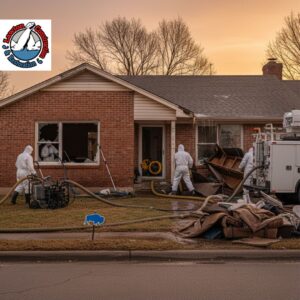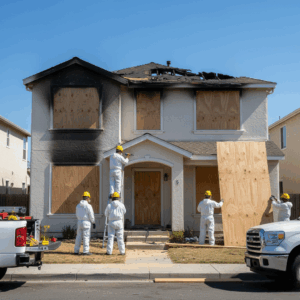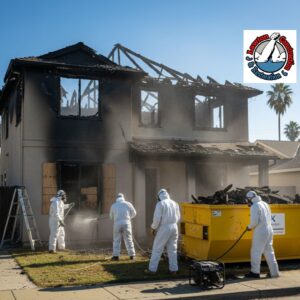Complete Guide to Mold Remediation Insurance for Homeowners
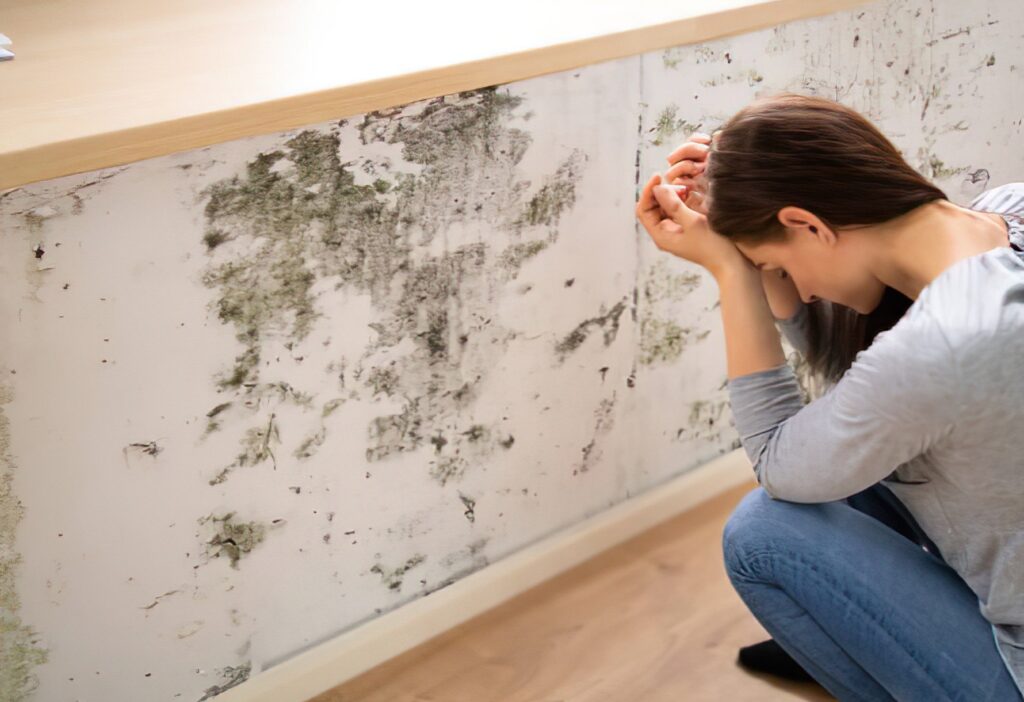
Table of Contents
Introduction
Have you ever discovered a patch of mold in your home and wondered, “Will my insurance cover this?” You’re not alone. For many homeowners, mold is more than just an eyesore—it’s a costly and stressful issue that raises urgent questions about insurance coverage, health, and home safety. Whether it stems from a hidden leak or storm damage, mold can spread quickly and cause serious structural and health concerns if left unchecked.
Understanding what your homeowners insurance actually covers when it comes to mold isn’t always straightforward. Terms like mold remediation coverage or insurance for mold damage might be buried in the fine print of your policy, leaving you unsure of what’s protected—and what isn’t—until it’s too late.
That’s where this guide comes in. We’ll break down everything you need to know about mold remediation insurance, from what’s typically included in your policy to how to navigate claims and prevent future mold problems. By the end, you’ll feel more confident in your coverage, more prepared to take action, and better equipped to protect your home.
Let’s dive in and uncover what’s really behind your insurance policy’s approach to mold.
Understanding Mold and Its Impact
Have you ever walked into your basement or bathroom and noticed a musty odor or strange discoloration on the walls? That could be mold—and it’s more than just an inconvenience. Mold can quietly take hold of your home, and before you know it, you’re dealing with more than just a cosmetic issue.
Why Does Mold Grow in Homes?
Mold thrives in damp, dark, and humid environments. That means areas like bathrooms, basements, crawl spaces, and even behind walls can become prime breeding grounds. Common causes of indoor mold growth include:
- Leaky pipes or roofs
- Poor ventilation
- Flooding or water damage
- Condensation buildup
Even a small water leak left unresolved can create the perfect conditions for mold to grow and spread.
Health Risks You Shouldn’t Ignore
Mold exposure can affect everyone differently—but for some, it can lead to serious health concerns. You or your family members may experience:
- Nasal congestion and sneezing
- Coughing or throat irritation
- Skin rashes or eye irritation
- Worsened asthma or allergic reactions
If left untreated, mold can also exacerbate existing respiratory conditions, especially in children, older adults, and those with weakened immune systems.
The Hidden Cost: Structural Damage
Beyond health effects, mold can weaken the very structure of your home. Over time, it can:
- Rot wooden beams and drywall
- Damage insulation
- Lower property value
- Lead to costly remediation if not addressed early
That’s why understanding your homeowners insurance and how it handles mold issues is essential. Not all policies offer mold remediation coverage, and being unprepared can leave you footing the bill for repairs.
How Mold Sneaks Up on You
What makes mold particularly tricky is how silently it spreads. You may not even know it’s there until it’s too late. Be on the lookout for:
- Persistent musty odors
- Peeling paint or wallpaper
- Warped walls or ceilings
- Health symptoms that improve when you leave home
Recognizing the early signs is your first defense against serious damage—and knowing whether your insurance for mold will help cover the costs is just as important.
In the next section, we’ll explore exactly what typical homeowners insurance policies cover when it comes to mold—and where they fall short.
Basics of Homeowners Insurance Coverage
You pay for homeowners insurance to protect your biggest investment—your home. But when it comes to mold, many homeowners are surprised to learn that not all policies are created equal. So, how do you know if your policy includes mold remediation coverage? And what exactly is considered a “covered event”?
Let’s break down the essentials so you can better understand where your coverage starts—and where it might leave you exposed.
What Does Homeowners Insurance Typically Cover?
In general, standard homeowners insurance policies are designed to cover sudden and accidental damages. That means if mold results from an event that’s abrupt and unexpected, such as:
- A burst water pipe
- An overflowing washing machine
- Water damage from a broken appliance
Then you may be covered for mold remediation insurance—but only if the mold is a direct result of that covered peril.
Where It Gets Complicated: Common Exclusions
Here’s where many homeowners run into trouble. Mold that develops from long-term issues or neglect usually isn’t covered. This includes:
- Poor home maintenance (e.g., ongoing roof leaks)
- High indoor humidity levels
- Basement seepage or poor ventilation
In the eyes of the insurer, these issues fall under homeowner responsibility. That’s why understanding the line between preventable damage and insurable events is critical.
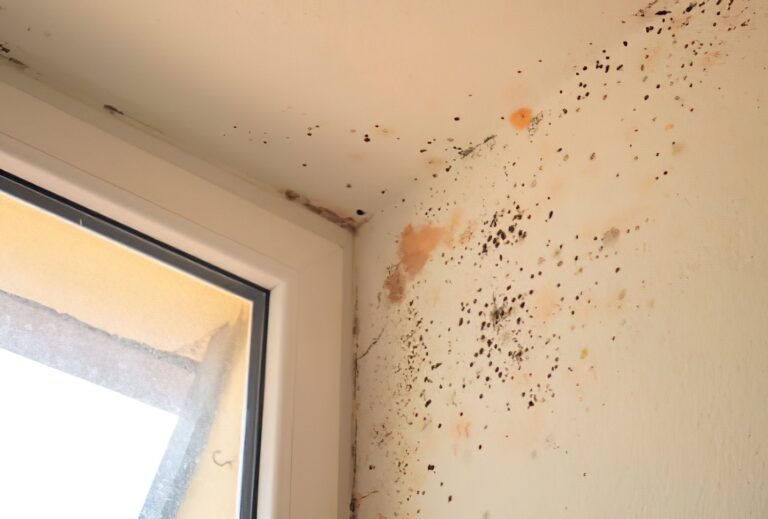
The Fine Print: Mold Endorsements and Policy Add-Ons
Some insurance companies offer special homeowner insurance mold endorsements or riders. These add-ons can expand your protection and cover mold remediation in a wider range of situations. Here’s what you need to know:
- Mold endorsements come at an additional premium
- Coverage limits may range from $1,000 to $10,000 or more
- Not all providers offer mold-specific add-ons
If mold is a concern in your area—think humid climates or older homes—it may be worth discussing additional coverage options with your insurance agent.
Know Your Policy, Know Your Risk
When was the last time you actually read your insurance policy? If you’re like most homeowners, the answer might be “never.” But if you want to be protected, you need to know exactly what your property insurance mold clause says.
Here’s what to look for:
- Covered perils that could lead to mold
- Policy exclusions related to water or humidity
- Mold damage limits or caps
- Opportunities to purchase extra mold coverage
Reading through your policy (yes, even the small print!) can save you major headaches—and costs—down the road.
Next, we’ll dive into specific scenarios when mold is and isn’t covered, so you’ll know exactly when to file a claim and when prevention is your best bet.
When Does Home Insurance Cover Mold Remediation?
Here’s the million-dollar question every homeowner wants answered: “Will my insurance actually pay for mold cleanup?” The answer? It depends—but knowing exactly when your homeowners insurance steps in can make all the difference between full coverage and an out-of-pocket headache.
Covered Events That Can Lead to Mold
Insurers typically cover mold if it’s caused by a covered peril—an event that’s sudden, accidental, and listed in your policy. For example, you might be eligible for mold remediation coverage in the following situations:
- A burst pipe that soaks your drywall and causes mold growth
- An HVAC leak that leads to hidden moisture buildup
- Water damage from a house fire that later results in mold
In these cases, the mold is considered a result of a covered event—not the primary problem—which is a key distinction in getting your costs reimbursed.
When Coverage Gets Denied
Unfortunately, mold claims can often be rejected, especially when the damage stems from neglect or long-term maintenance issues. Insurance companies may deny a claim if mold is caused by:
- Slow leaks that went unnoticed for months
- Poor ventilation in attics or crawl spaces
- Repeated flooding in areas with no waterproofing
- High indoor humidity levels left unaddressed
If the insurer determines that the mold could’ve been prevented, they may consider it your responsibility—and deny your claim accordingly.
Why Timing and Documentation Matter
If you discover mold in your home, acting fast is essential. Delays can lead insurers to question the cause and severity of the damage. To improve your chances of approval:
- Take photos of the affected area immediately
- Write down when and how you discovered the issue
- Save repair receipts or inspection reports
- Report the problem to your insurer as soon as possible
Quick action helps establish a clear connection between the mold and a covered peril, strengthening your case for a successful insurance claim for mold.
Know Your Limits—Literally

Even when your policy covers mold, there’s a catch: payout limits. Most standard policies cap mold damage insurance between $1,000 and $10,000. That might sound like a lot—until you realize severe mold remediation can easily exceed that amount.
To prepare, check your policy for:
- Mold-specific coverage caps
- Whether those limits include both remediation and repair
- Options for increasing coverage through endorsements
Understanding these limitations ahead of time allows you to make informed decisions before mold becomes a financial burden.
In the next section, we’ll walk you through the actual claims process—so you’ll know exactly what steps to take if mold ever shows up uninvited.
Filing a Mold Insurance Claim: Step-by-Step
So, you’ve discovered mold in your home, and after checking your policy, you’re ready to file a claim. But what’s the process? How do you ensure that your claim is handled smoothly and effectively? Don’t worry—we’ve got you covered. Here’s a step-by-step guide to navigating the often-overwhelming world of insurance for mold.
1. Assess and Document the Damage
Before you call your insurance company, take a deep breath and assess the damage. Quick action is key, but it’s also essential to have solid documentation. The more detailed you are, the better your chances of approval.
- Take Photos and Videos: Capture clear images of the mold-affected areas, including walls, ceilings, floors, and any visible water damage.
- Create a Detailed List: List all areas affected by mold and any potential sources of the water damage (e.g., burst pipe, roof leak).
- Note the Timeline: Write down when you first noticed the mold, any attempts to stop it from spreading, and how the situation has progressed. This helps prove it’s a result of a covered event.
The more information you can provide, the stronger your case will be when you reach out to your insurance provider.
2. Contact Your Insurance Provider
Once you’ve gathered all the necessary documentation, it’s time to notify your insurance company. Most insurers offer a simple process for filing a claim, often through an online portal, mobile app, or over the phone. When you call or submit the claim, make sure to:
- Provide Your Policy Number: This speeds up the process, as the claims representative will have all the details of your coverage at hand.
- Explain the Situation Clearly: Be concise but thorough—describe the cause of the mold and why you believe it’s covered under your homeowners insurance policy.
Ask About the Process: Don’t hesitate to ask how long the claims process will take, what documentation is required, and any next steps.

3. Work with the Insurance Adjuster
After you file the claim, an adjuster will typically visit your home to assess the mold damage firsthand. It’s crucial to be present during the inspection so you can point out the mold’s source and provide all the evidence you’ve gathered.
- Highlight the Cause of the Damage: Ensure the adjuster understands that the mold resulted from a covered peril—whether it’s from a burst pipe, storm damage, or another insurable event.
- Have Your Documentation Ready: Present photos, videos, repair receipts, or professional inspections that support your claim. The more thorough your documentation, the more likely it is that your claim will be approved.
Remember, the adjuster’s job is to verify the extent of the damage and whether the mold is covered by your policy. Make sure you’re proactive in answering any questions and providing requested documentation.
4. Hire a Licensed Mold Remediation Contractor
If your claim is approved, the next step is to hire a licensed mold remediation contractor. Your insurer may provide a list of recommended contractors, or you can choose one yourself. Just make sure the professional you hire:
- Has Experience: Mold remediation is specialized work. Ensure the contractor is licensed and has a solid track record.
- Uses Proper Equipment: They should use state-of-the-art equipment to contain, clean, and prevent future mold growth.
- Provides a Written Estimate: Get a detailed estimate for the job, including labor, materials, and any associated costs for water damage repairs.
If the damage is extensive, you may need to get multiple quotes to ensure you’re getting a fair price. Your insurer may also require an estimate before approving remediation costs
5. Keep Detailed Records of All Expenses
As mold remediation progresses, keep a careful record of all related expenses. This includes:
- Mold removal and cleaning costs
- Any necessary repairs (e.g., replacing drywall, flooring, insulation)
- Temporary living expenses if you need to leave your home during the remediation process
Your insurance may cover some of these costs, so keeping receipts and documentation is crucial for reimbursement.
Once your claim is processed and remediation is complete, you’ll be on your way to a mold-free home. But keep in mind, understanding your coverage and staying proactive is essential in preventing mold in the future.
Next, we’ll explore some effective strategies for improving your chances of mold insurance coverage, so you can be prepared for whatever comes next.
How to Improve Your Chances of Coverage for Mold Remediation
No one plans for mold to invade their home, but being proactive can increase your chances of having mold remediation insurance coverage when the unexpected happens. Mold insurance coverage isn’t always a guarantee, but there are steps you can take now to reduce the likelihood of mold issues and ensure you’re better protected when disaster strikes.
1. Prevent Mold Before It Starts
The best way to handle mold is to never let it get a foothold in the first place. Regular maintenance and keeping moisture levels in check can go a long way in preventing mold growth. Here’s how you can stay ahead of the game:
- Fix Leaks Promptly: Water is the main catalyst for mold. Whether it’s a leaky roof, plumbing issue, or broken appliance, repairing leaks immediately can prevent mold from forming.
- Ensure Proper Ventilation: Install exhaust fans in areas like bathrooms and kitchens, where humidity levels are high. Use dehumidifiers in basements or other damp areas to keep moisture under control.
- Check for Condensation: Condensation on windows or pipes is a sign of excessive humidity. Use a hygrometer to monitor moisture levels in your home and keep them below 60%.
- Clean Gutters Regularly: Clogged gutters can lead to water backing up into your home. Clean them at least twice a year to avoid water damage.
By taking care of these small tasks, you’re not only preventing mold but also potentially avoiding the need to rely on homeowners insurance for mold damage in the future.
2. Keep Good Home Maintenance Records
Did you know that keeping track of your home’s maintenance can improve your chances of receiving coverage for mold damage? Insurance companies may ask for documentation to prove that mold resulted from a covered peril—this could be harder to show if you have a history of neglecting your home’s upkeep. Here’s what to keep on file:
- Repair Receipts: Keep records of any repairs, whether it’s fixing leaks, replacing pipes, or updating old appliances.
- Inspection Reports: Schedule regular home inspections to identify potential issues before they turn into mold problems.
- Maintenance Logs: Document when you clean gutters, replace weatherstripping, or service HVAC systems.
Having these records not only demonstrates that you’re a responsible homeowner, but it also strengthens your claim if mold does occur.
3. Speak with Your Insurance Agent About Mold Coverage
Many homeowners are unaware that they can request additional coverage for mold remediation. Speak to your insurance agent about mold-specific coverage options, such as adding a rider or endorsement to your policy. These options can help cover the costs of mold remediation in the event that it results from a covered incident.
- Discuss Your Concerns: If you live in a humid area or your home has had past water damage, explain this to your agent. They can recommend coverage tailored to your needs.
- Review Policy Exclusions: Understand what is and isn’t covered, especially when it comes to mold caused by long-term neglect.
- Inquire About Mold Remediation Riders: Some policies allow for the addition of specific riders that extend coverage for mold cleanup and repairs.
By taking the time to have a conversation with your insurance provider, you ensure that you’re fully aware of the protections available to you.
4. Regularly Review and Update Your Insurance Policy
Life changes, and so do the risks to your home. Whether you’ve added new plumbing, renovated your basement, or upgraded your roof, it’s essential to regularly review and update your homeowners insurance policy to reflect these changes. Be sure to:
- Adjust Coverage Limits: If you’ve made improvements that increase the value of your home, ensure your insurance covers the updated value.
- Check for Mold Coverage: Ask if your current policy includes or excludes coverage for mold, and see if adding a mold rider is an option.
- Account for Climate Risks: If you live in an area prone to flooding or heavy rainfall, make sure your policy reflects the increased risk of mold in these environments.
Staying on top of your policy ensures you aren’t caught off guard when mold issues arise.
By taking these steps to prevent mold, document your efforts, and engage with your insurance provider, you’re putting yourself in the best position to be covered if mold ever becomes a problem. In the next section, we’ll dive into what to do if your mold insurance claim is denied, giving you the tools to handle setbacks with confidence.
What to Do If Your Mold Insurance Claim Is Denied
It’s a frustrating moment when you find out that your mold remediation insurance claim has been denied. After all, you’re just trying to protect your home, right? But don’t lose hope just yet. A denial doesn’t mean the end of the road. There are steps you can take to challenge the decision and, in some cases, get the coverage you deserve.
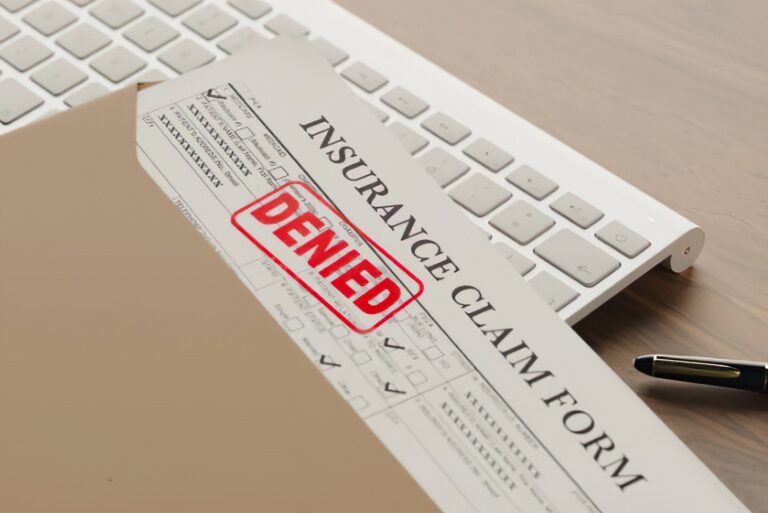
1. Understand Why Your Claim Was Denied
The first step is to understand why your claim was denied. Insurers don’t just say “no” without a reason, and knowing the exact cause of the denial can help you plan your next move. Common reasons for denial include:
- Coverage Exclusions: Some policies exclude mold caused by long-term neglect or improper maintenance.
- Policy Limits: If your mold damage exceeded the coverage limit, you might have been denied reimbursement for the extra costs.
- Lack of Documentation: If you failed to provide enough evidence to support your claim, it could result in a denial.
- Late Reporting: If you didn’t notify your insurer in a timely manner, they may deny your claim due to failure to meet their reporting deadlines.
Once you know the reason behind the denial, you can determine whether it’s something you can fix or dispute.
2. Review Your Insurance Policy
Take a step back and review your homeowners insurance policy in detail. Focus on the fine print, especially the exclusions and coverage limits regarding mold. Pay attention to:
- Covered Perils: Is the mold linked to a covered peril, such as water damage from a burst pipe or a leaky roof? If so, the denial may be unjust.
- Mold Coverage Limits: Some policies only cover a small amount for mold remediation—often up to $10,000 or less. Check if your damage exceeds this cap.
- Maintenance and Neglect Clauses: Review the sections about maintenance responsibilities. If the insurer claims you neglected necessary repairs, make sure you can prove otherwise.
Armed with this information, you can approach the next steps more confidently, knowing exactly where your policy stands.
3. Gather Additional Documentation
If your claim was denied due to insufficient evidence, it’s time to strengthen your case. Consider these steps:
- Get a Professional Inspection: A certified mold remediation expert can provide an independent report on the extent of the damage and whether it stems from a covered event.
- Provide Repair or Maintenance Records: If the insurer claimed that the damage was due to neglect, provide records showing you’ve regularly maintained your home.
- Show Photos and Videos: More documentation, especially visual proof, can help your case. Take clear, updated photos and videos of the mold damage, repairs, and any ongoing water issues.
The more thorough your evidence, the more likely you are to overturn the denial.
4. Appeal the Decision
Don’t be afraid to appeal the insurer’s decision. In fact, many insurance companies expect homeowners to do so. Here’s how to go about it:
- Submit Your Appeal in Writing: Clearly outline why you believe the decision was incorrect, and attach any additional evidence you’ve gathered.
- Stay Professional: Even though it’s frustrating, keep your tone calm and professional. Being polite and clear will help you in negotiations.
- Follow the Appeals Process: Every insurance company has its own formal appeal process, so make sure to follow it closely. Ask the insurer for their appeals guidelines and deadlines.
If you feel that the denial was unfair, an appeal could potentially reverse the decision and result in approval.

5. Seek Legal or Professional Help
If you’ve tried appealing and your claim is still denied, it might be time to get professional help. A public adjuster or attorney who specializes in insurance claims can:
- Review the Denial: They can go through your policy and help determine if your insurer acted inappropriately.
- Negotiate on Your Behalf: An experienced professional can often get better results by negotiating directly with the insurance company.
- Take Legal Action: If all else fails, they may suggest legal action to dispute the denial in court.
This step comes with a cost, but it may be worth it if you’re dealing with a significant mold problem that needs to be addressed immediately.
While facing a mold claim denial is never easy, knowing how to respond can increase your chances of a favorable outcome. In the next section, we’ll discuss some alternative options for dealing with mold damage if your insurance coverage is insufficient or unavailable.
Alternative Solutions for Mold Remediation if Insurance Coverage Falls Short
What happens if your mold remediation insurance claim is denied or if your policy doesn’t cover the full extent of the damage? Don’t worry; there are still ways to handle the problem effectively without breaking the bank. While homeowners insurance is a great safety net, there are other options to consider if your coverage isn’t sufficient or if you’re left dealing with the aftermath of a rejection.
1. DIY Mold Removal: When to Handle It Yourself
If the mold damage is minor and localized, you might be able to take care of it on your own. Here are some situations when DIY mold remediation is safe and cost-effective:
- Small Mold Patches: Mold that covers an area of less than 10 square feet can typically be cleaned without professional help.
- Visible Mold on Non-porous Surfaces: Mold on hard surfaces like tile, glass, and metal can often be scrubbed away using cleaning agents.
For DIY mold removal, make sure to equip yourself with the right tools and materials:
- Protective Gear: Wear gloves, goggles, and an N95 respirator mask to avoid inhaling spores.
- Cleaning Solutions: Use a mix of water and detergent or a bleach solution to clean affected areas.
- Disposal: Dispose of contaminated materials (e.g., sponges, rags) in sealed plastic bags to prevent spreading mold spores.
Remember, while DIY mold removal can be effective for smaller problems, never attempt it if you’re dealing with large-scale mold growth or if the mold has penetrated walls, insulation, or floors.
2. Hiring a Mold Remediation Professional
If your mold problem is beyond what you can handle, or if you prefer to avoid the risk of improper removal, hiring a mold remediation contractor is your best bet. Here’s how to choose the right professional:
- Certification and Licensing: Ensure the contractor is certified by a recognized body, such as the Institute of Inspection, Cleaning, and Restoration Certification (IICRC).
- Experience: Look for a company that specializes in mold remediation and has experience with the specific type of mold issue you’re facing.
Free Estimates: Many companies offer free inspections or estimates, so get a few quotes to compare prices.

Professionals will use advanced equipment like dehumidifiers, air scrubbers, and ozone machines to remove mold effectively and prevent it from coming back.
3. Explore Government Assistance Programs
In some cases, you may qualify for government aid or low-interest loans to help pay for mold remediation. Certain federal or state programs, especially after a natural disaster, may assist homeowners in dealing with mold issues. For example:
- FEMA Assistance: If your mold damage resulted from a recent disaster (flood, hurricane, etc.), FEMA might offer assistance to help cover remediation costs.
- Low-Interest Loans: The U.S. Small Business Administration (SBA) sometimes offers low-interest loans to homeowners affected by mold due to flooding.
To explore government assistance, visit your local government or FEMA website to learn about available programs in your area.
4. Negotiate with Your Insurance Provider
If your insurance for mold claim was partially approved or denied, try negotiating with your insurer. Sometimes a denial is based on the way the claim was filed or on technicalities in your policy’s wording. Consider the following steps:
- Request a Re-evaluation: If you believe the mold damage is connected to a covered peril, provide additional documentation, such as professional assessments or maintenance records, to support your case.
- Seek a Second Opinion: If your insurer insists that mold is not covered, ask for a second review by a different adjuster. This may result in a different outcome.
- Request an Increase in Coverage: If the initial payout is insufficient, you can negotiate for a higher payout based on updated repair estimates or a more accurate assessment of the damage.
If you’ve already spoken with your insurance adjuster and received a denial, consider speaking with a public adjuster who can help advocate on your behalf.
5. Consider Financing Options
If your insurance isn’t enough or if you’re left without coverage entirely, financing options may be available to help cover the cost of remediation. Many mold remediation contractors offer flexible payment plans. Alternatively:
- Home Improvement Loans: Consider applying for a home improvement loan to cover the costs of mold remediation. These loans often come with lower interest rates than credit cards.
- Credit Cards: For smaller jobs, you may choose to use a credit card with an introductory 0% APR to spread out the cost of mold removal.
Financing can provide a temporary solution while you work on improving your home’s condition, but always be sure to read the terms and conditions carefully before committing to any loan or credit option.
Whether your insurance coverage doesn’t meet your needs or you simply want to explore other ways of addressing mold issues, there are plenty of alternative solutions available. Taking quick action and considering your options carefully will help you regain a safe, mold-free living space without the stress. In our next section, we’ll recap everything you need to know about mold remediation and insurance, so you’re fully equipped to face any future challenges head-on.
Conclusion: Ensuring Your Home Is Mold-Free and Covered
Navigating the world of mold remediation insurance can feel overwhelming, but with the right knowledge and preparation, you can protect your home and your family from the unexpected. Whether you’re learning how to prevent mold in the first place, filing an insurance claim, or seeking alternative solutions when coverage falls short, it’s clear that being proactive is key. So, are you ready to ensure that your home is both safe and protected?

If you’ve followed the steps outlined in this guide, you’re already ahead of the game. From understanding your homeowners insurance mold coverage to exploring financing options, there are a variety of ways to address mold issues, no matter what stage you’re at. Remember, the more informed you are, the better equipped you’ll be to handle any situation that comes your way.
And while no one wants to deal with mold, being prepared for potential damage and knowing your insurance options will provide peace of mind. Make sure to regularly review your policy, keep up with home maintenance, and stay vigilant about mold prevention. By doing so, you’ll not only ensure that you’re covered by mold remediation insurance, but also create a safer, healthier environment for your family.
If mold strikes, don’t panic—there are solutions available. From reaching out to your insurance provider to hiring a professional mold remediation company, you can take control of the situation. And if you’re ever faced with a claim denial, don’t forget that appealing the decision or seeking alternative options can help you get the coverage and support you deserve.
In the end, safeguarding your home from mold is a journey, and now that you know the steps to take, you’re well on your way to ensuring your home stays dry, clean, and mold-free. Let’s face it: you deserve a home that’s as safe and secure as possible—so take the steps today to protect it tomorrow.

